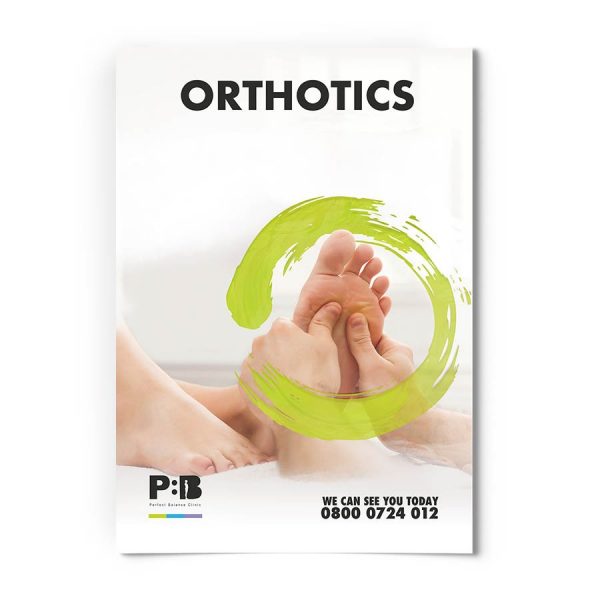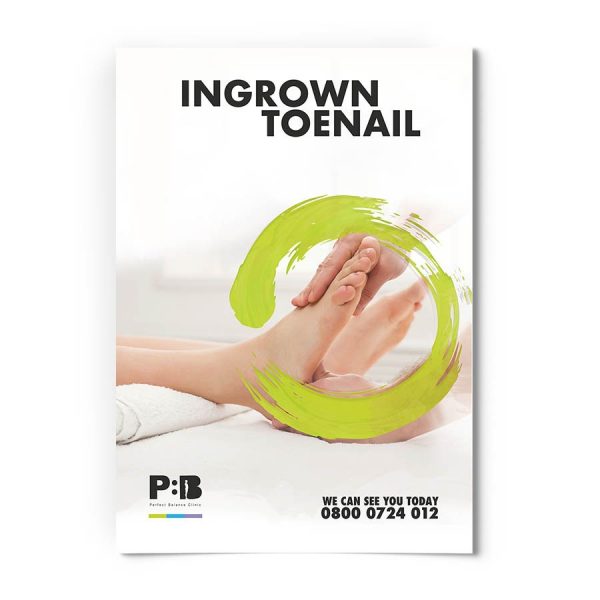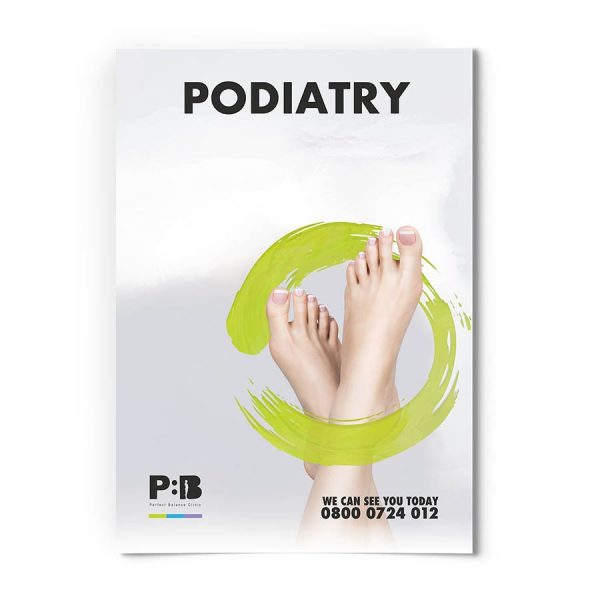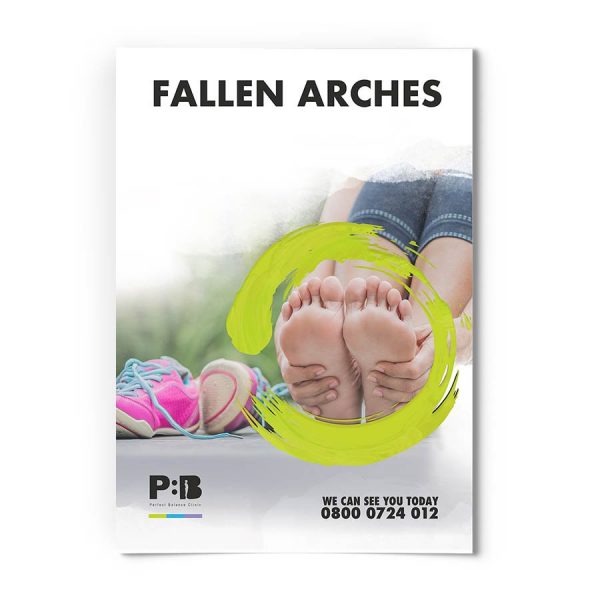In this article, we take a look at posture orthotics and how they work when it comes to addressing your postural issues. Posture orthotics are useful when considering postural problems and correction of these.
The relationship between posture and your feet
Bad posture can usually be blamed on your feet. This is because of feet hyperpronated (arches collapse and ankles roll in), they don’t properly support your body. Your knees rotate inward, your back sways, which makes your stomach and buttocks stick out, your shoulders roll forward and your head is forward of your shoulders. This is the perfect definition of bad posture.
You are off balance and it shows. You are stressing your body, and over time you are causing physical damage to your muscles, ligaments, and joints. If you are suffering from bad posture, you may need to look at whether you are suffering from a common foot condition.
What are Posture Orthotics?
Orthotic shoe devices are moulded pieces of rubber, leather, metal, plastic, or other synthetic material that is inserted into a shoe. Their objective is to balance the foot in a neutral position and then cushion the foot from too much pounding. There is a variety of orthotics that are available for different foot problems. In this article, we will show you different foot issues that can be benefited from the use of orthotics.
Orthotics for Achilles Tendonosis
What is Achilles Tendonosis?
Achilles tendinopathy is a common condition and can be difficult to treat due to the limited vascular supply of the tendon and the stress within the Achilles tendon with every step. There is evidence which indicates that treatment incorporating custom foot orthotics can improve this condition by making the foot a more effective lever in gait.
Abnormal pronation or collapse of the arch can cause a damaging twist as demonstrated in the video. Achilles Tendonosis is a chronic breakdown of the tendon over time and usually without inflammation.
A study that was created in 2008 reported between 50 and 100% relief (average 92%) from Achilles tendinopathy symptoms with the use of custom foot orthotics.
The orthotics for the patient with Achilles tendinopathy should limit heel eversion and subsequent internal rotation of the tibia to prevent an internal twist of the Achilles tendon.
How Orthotics can help Achilles Tendonosis
Evidence indicates that treatment incorporating custom foot orthoses can improve this condition by making the foot a more effective lever in gait. A 2008 study reported between 50 and 100% relief (average 92%) from Achilles tendinosis symptoms with the use of custom foot orthoses1.
The orthotics for the patient with Achilles tendonosis should limit heel eversion and subsequent internal rotation of the tibia to prevent an internal twist of the Achilles tendon, reduce tension on the tendon by encouraging early heel lift, and stabilise mid-tarsal joint motion to provide a more efficient lever for heel lift.
Those which suffer from Achilles Tendonosis would benefit from Orthotics as they will help keep your heels from rolling which causes the pressure on your Achilles Tendon. After the first few minutes of wearing Orthotics, you will be able to notice how much pressure has been taking off your Achilles Tendon.
Orthotics for Bunions (Hallux Valgus)
What are Bunions?
In orthopaedics, bunions and Hallux valgus are terms used to describe one of the most common ailments of the foot, especially among women.
A bunion is a mal-alignment of the two bones which form the base joint of the big toe. Due to the misalignment, the big toe begins to angle inward towards the other toes, which leads to thrusting the base joint out further in the opposite direction.
Aside from being unsightly, bunions can develop into a painful condition over time, if neglected.
How Posture Orthotics can help with Bunions
Abnormal pronation or collapse of the arch may cause the bones to rotate and lead to poor alignment at the big toe joint. When the big toe angles towards the smaller toes, a bony bump may be painful as demonstrated in the video.
Hallux Valgus may be related to a family history of bad bone alignment and poor biomechanics whilst bunions can be bone growths from abnormal shoe pressure.
A custom orthotics device and properly fitted footwear are designed to stop or reduce abnormal foot pronation. This may prevent the bones and ligaments from twisting out of alignment.
Most studies are now showing that those with Hallux Valgus primary goal is to encourage plantar flexion of the first ray. By encouraging plantar flexion of the first ray we’re able to decompress the first metatarsal phalangeal joint enhance windlass function and see better motion within the first MPJ. We will see less compression with the first MPJ and less pain from Hallux Valgus.
In order to make an Orthotic device that’s going to best accomplish these goals, we want a device that is going to decrease eversion of the calcaneus and then allow the first ray to plantarflex. So as far as the Orthotics go, we’re going to go with a device with a relatively deep heel cup so that we can use this orthosis to apply force to the medial aspect of the heel in order to put a super natori torque across the subtalar joint axis.
Within the heel cup, we incorporate a medial heel skive (which is a medial wedge added into the heel cup of the orthosis itself). In the arch of the orthosis, we would do a minimum cast fill so that it would conform very tightly to the arch of the foot. It is important to invert the orthosis by a few degrees in order to further raise the arch.
Orthotics for IT Band Syndrome
What is IT Band Syndrome?
The iliotibial band is a structure known as fascia which arises from a small muscle at the hip and runs down the side of the leg to attach just below the outside of the knee.
This will help to stabilise the leg during walking and running. If this becomes tight or there is poor function, then it can become irritated as it rubs over the outside of the knee and this is termed ITB syndrome.
In many cases, an appropriate exercise programme, footwear/orthotics, and a suitable training programme are sufficient to resolve the problem.
How Posture Orthotics can help with IT Band Syndrome
Abnormal pronation or rolling of the foot may cause inflammation when the lower leg bone rotates inwards whilst tendons pull and rub against the outside knee bone.
Iliotibial Band Syndrome is an overuse problem and caused by running or cycling with poor biomechanics. A custom orthotic device is designed to reduce the inward rotation of the lower leg and decrease chronic painful rubbing on the outside of the knee.
For those who pronate or flatten out too much, if we can put something underneath their arch to stop them from rolling in; by stopping that from happening we can stop the leg from rotating in the inside and we keep the knee functioning straight ahead, so that the kneecap doesn’t get pulled off to the side. This will allow normal motion of the knee.
It should be made clear that by no means is every knee problem and every case of Runners Knee caused by foot function. However, there’s a fair amount of research online that shows that in many patients, there is a relationship. It is worth trying this approach to help to stabilise the foot if you do have this problem.
Custom Posture Orthotics for ITB Syndrome tend to work better than over-the-counter Orthotics, because they conform tighter to the arch of the foot, and by conforming tighter to the arch of the foot, they do a better job at stopping the foot from rolling in.
Orthotics for Metatarsalgia
What is Metatarsalgia?
Recent studies have shown that the most important aspect of the orthotic is that it conforms extremely tight to the arch of your foot. By conforming close to the arch, it is able to transfer pressure off of the ball of your foot.
These are called total contact orthotics. In addition, orthotics for the ball of foot pain should include cushion under the ball of the foot.
How Posture Orthotics can help with Metatarsalgia
Abnormal pronation or collapse of the arch may cause excessive metatarsal bone rotation and forefoot pressure leading to pain.
Metatarsaligia is a general pain in the ball of the foot from poor biomechanics, usually under metatarsal bones 2, 3, and 4. A custom orthotic device is designed to reduce abnormal foot pronation, stop metatarsal bone rotation and friction, and can relieve painful inflammation. The main Orthotic goals for Metatarsaligia are
- Reduce forefoot pressure
- Reduce forefoot friction (Callus, Blisters, Ulcer).
Reducing forefoot pressure for Metatarsalgia
- Use non-deforming materials – Non-deforming materials improve pressure redistribution including Polypropylene and Graphite. A study shown in 2000 showed that semi-rigid Orthoses had a significant effect on pain.
- Conform close to the arch – Total contact inserts reduce the excessive pressure at the metatarsal heads by increasing the contact area of forces.
- Metatarsal pads or bars – Met pads can be placed between 6.1mm and 10.6mm proximal to met head resulted in significant peak plantar pressure reduction compared to wearing TCI only.
- Covers glued posterior only – Metatarsal pad and bar positioning is patient-specific and may require adjustment. Recommend adding in the office.
- Forefoot cushion – Cushioning decreases force by decreasing velocity. Poron extension to Sulcus.
Reducing forefoot friction for Metatarsalgia
- Decrease Friction – PTFE Patch for calluses, ulcers, and blisters. PTFE Patches help relieve friction and shear to help in healing the plantar foot. Also, when combined with an offloading orthotic, it can neutralise the primary causes of calluses and ulcers. It can also be applied to orthoses in common areas of callus or ulcer formation.
Metatarsaligia Orthotics form an important part of the treatment for Metatarsaligia. These types of Orthotics can help by reducing the ball-of-the-foot pain. You will need to place the Orthotics pad behind the ball-of-the-foot to reduce stress and to distribute the weight from the painful region to more enduring regions.
Custom made Orthotics do a great job in decreasing pressure through the ball of the foot. It also has a metatarsal bar which will decrease pressure through the metatarsal region as well as some additional padding.
When these products are introduced in the right footwear, the person suffering from Metatarsaligia will get relief from the pain. Custom-made foot Orthotics have become an important component of the treatment of Metatarsaligia.
Posture Orthotics for Plantar Fasciitis
What is Plantar Fasciitis?
Plantar fasciitis gets its name from the plantar fascia; the band of connective tissue that stretches from the heel to the ball of your foot. Over time, too much stress on that connective tissue will cause over-tightening, tearing, and inflammation.
When the connective tissue becomes inflamed, plantar fasciitis sets in. A painful cycle then sets in when your foot, which naturally tightens at night, immediately gains new tears each day with your first steps in the morning.
How Orthotics can help with Plantar Fasciitis
Abnormal pronation or flattening and stretching of the foot’s arch may cause damage to the soft tissues connecting and pulling on the heel bone.
Plantar Fasciitis is a chronic breakdown and tearing of ligament type soft tissue called the fascia, usually caused by constant tugging at the heel bone attachment site. A custom orthotic device is designed to stop and reduce the stretching of the lower arch and heal chronic soft tissue damage.
The main goal of Posture Orthotics for Plantar Fasciitis is to unload the fossa we’re trying to do something biomechanically to prevent that posture from stretching. Here are a few pointers which our Podiatrist has mentioned for Plantar Fasciitis Orthotics.
- Use non-weight bearing casting
- Plantarflex the 1st ray when casting
- Prescribe an orthosis that conforms close to the arch of the foot
- Use valgus extensions or reverse Morthon’s extensions.
Posture Orthotics for Shin Splints
What are Shin Splints?
If you are experiencing pain or tenderness in the lower shin area, you may have shin splints. This is also known as medial tibial stress syndrome. Shin splints don’t actually occur in the shin bone but in the connective tissues of the muscles around the shins.
The pain is more prominent during physical activity but may linger afterward as the condition gets worse. High-impact activity, like running, is the most common cause of shin splints, but the condition isn’t limited to sprinters.
Anyone who suddenly increases mileage, switches workout surfaces (like going from mats to hard surfaces), or is beginning a new routing may experience shin splints.
How Can Posture Orthotics help with Shin Splints?
Abnormal pronation or collapse of the long arch may cause exercise-induced fatigue and leg pain.
Shin splints are tired muscles trying to stop the arch from flattening because they are working harder than normal. A custom orthotic device is designed to reduce abnormal pronation and stop or alleviate pain.
Stabilising and restoring your foot arches significantly reduces the tension created daily on your feet by supporting each foot in its optimal position. It is the only practical way to address both the symptoms and the cause of many lower extremity ailments including shin splints.
Custom Orthotics will allow your arch to be restored and will fully support your foot.
For more information about Posture Orthotics and how they can help solve your postural issues
This article was written by our team of specialist therapists at Perfect Balance Clinic. If you would like more specific advice about how our team can help you with this condition or symptoms you may be having, please complete the contact form below and one of the team will get back to you shortly.






